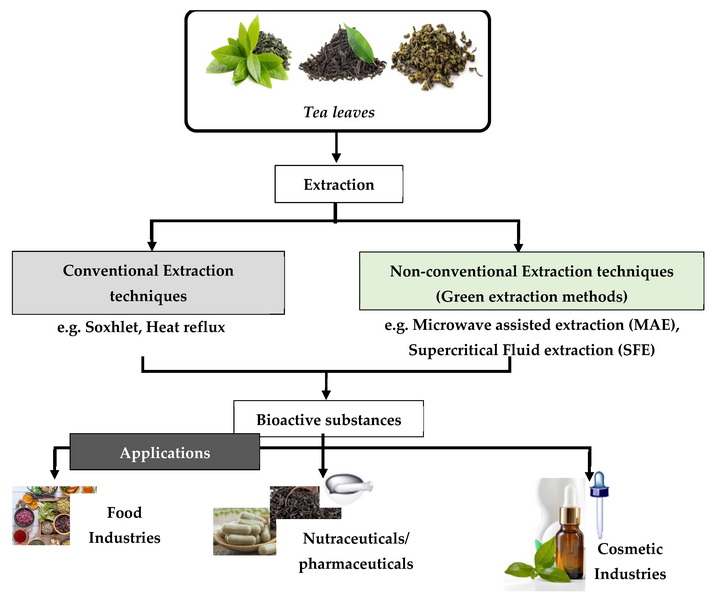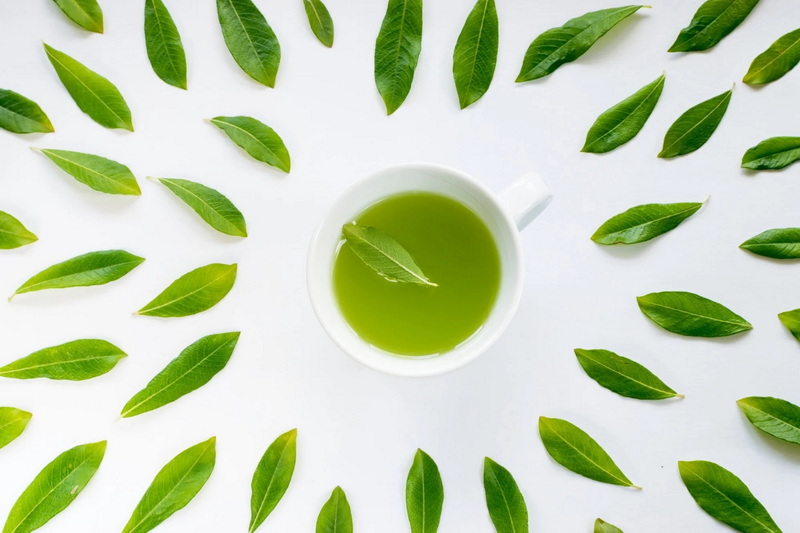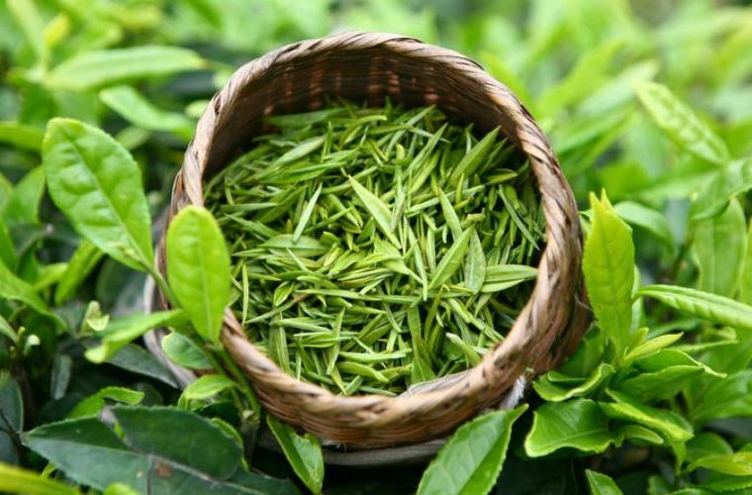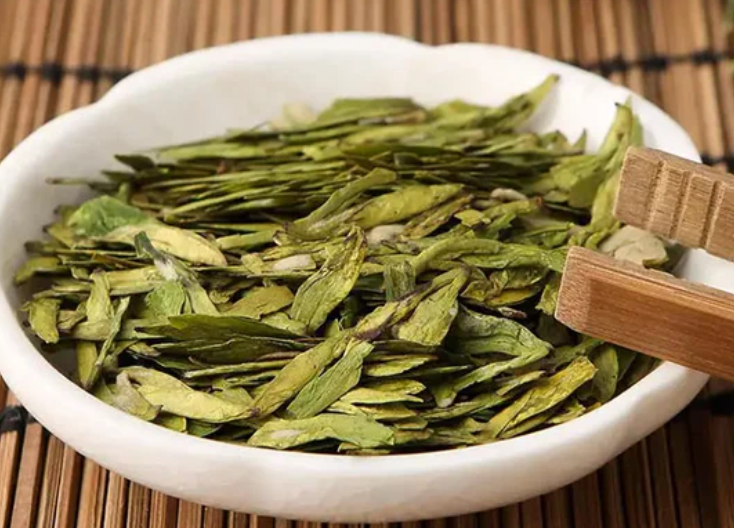Content Menu
● Why Extract Green Tea Polyphenols?
● Traditional Extraction Methods
>> Solvent Extraction
>> Resin Adsorption
● Modern Extraction Techniques
>> Ultrasound-Assisted Extraction (UAE)
>> Microwave-Assisted Extraction (MAE)
>> Deep Eutectic Solvents (DESs)
● Step-by-Step Guide to Ultrasound-Assisted Extraction with DES
>> Materials Needed:
>> Procedure:
● Factors Affecting Extraction Efficiency
>> Solvent Type
>> Temperature
>> Extraction Time
>> Liquid-to-Solid Ratio
>> Particle Size
● Applications of Green Tea Polyphenol Extracts
>> Dietary Supplements
>> Functional Foods and Beverages
>> Pharmaceuticals
>> Cosmetics
● Conclusion
● FAQ: Frequently Asked Questions About Green Tea Polyphenol Extraction
>> 1. What are the main health benefits of green tea polyphenols?
>> 2. Which extraction method is the most efficient for green tea polyphenols?
>> 3. What factors affect the extraction efficiency of green tea polyphenols?
>> 4. Are there any safety concerns associated with green tea polyphenol extracts?
>> 5. Can I extract green tea polyphenols at home?
● Citations:
Green tea, derived from the Camellia sinensis plant, is celebrated worldwide for its health benefits and distinctive flavor[5]. The secret behind these benefits lies in its rich composition of polyphenols, particularly catechins, with epigallocatechin gallate (EGCG) being the most prominent[2][7]. These natural plant compounds are potent antioxidants, known for their ability to protect the body against disease and promote overall well-being[2].
Polyphenols are a class of organic chemicals characterized by multiple phenol units[3]. These compounds are abundant in various plant-based foods and beverages, offering a range of health benefits due to their antioxidant, anti-inflammatory, and other therapeutic properties[5]. In green tea, polyphenols constitute about 8% to 12% of the dry weight, making it a significant source of these beneficial compounds[3].

Why Extract Green Tea Polyphenols?
Extracting green tea polyphenols allows for their concentration and utilization in various applications, including dietary supplements, pharmaceuticals, and functional foods[5]. The health benefits of green tea polyphenols are extensive[2][5][7]:
- Antioxidant Properties: Green tea polyphenols are powerful antioxidants, protecting cells from damage caused by free radicals[3][7].
- Cognitive Function: They may improve cognitive function and reduce the risk of cognitive impairment in middle and older age[7].
- Metabolism and Weight Management: Green tea can positively influence metabolism and may aid in weight management when combined with exercise[2][7].
- Disease Prevention: Regular consumption of green tea is associated with a reduced risk of heart disease, diabetes, and certain types of cancer[2][5].
- Bone Health: Green tea may help maintain bone density, reducing the risk of fractures[2].
- Gut Health: It can also improve gut health[2].
Given these benefits, the extraction of green tea polyphenols is a valuable process for harnessing their therapeutic potential.
Traditional Extraction Methods
Several traditional methods are employed to extract polyphenols from green tea leaves[6][8]. These methods rely on the solubility of polyphenols in different solvents and often involve multiple steps to purify the extract.
Solvent Extraction
Solvent extraction is one of the most common traditional methods[1][6][8]. This technique involves using a solvent to dissolve and separate the polyphenols from the tea leaves.
1. Water Extraction: This involves steeping tea leaves in hot water. While simple, it may not be the most efficient method for extracting all the polyphenols[6].
2. Organic Solvent Extraction: This method uses organic solvents like ethanol or ethyl acetate to extract polyphenols. The process typically involves[1][6]:
- Mixing tea leaves with the solvent.
- Stirring the mixture to enhance extraction.
- Separating the liquid extract from the tea leaves.
- Evaporating the solvent to obtain the crude polyphenols.
The choice of solvent affects the extraction rate and purity of the polyphenols. Glass containers are preferred to prevent hydrolysis, and rapid stirring is essential[6].
Resin Adsorption
Resin adsorption is another traditional method that uses resins to selectively adsorb polyphenols[1][6]. This method can be divided into three types based on the resin used:
1. Gel Column Separation: Utilizes a gel matrix to separate polyphenols based on size and charge.
2. Adsorption Column Separation: Employs a resin that adsorbs polyphenols, allowing other compounds to be washed away.
3. Ion-Exchange Column Separation: Uses ion-exchange resins to separate polyphenols based on their ionic properties.
The resin is washed with a solution to recover the polyphenols after adsorption.
Modern Extraction Techniques
Modern techniques offer more efficient and environmentally friendly ways to extract green tea polyphenols[4][6]. These methods often enhance the extraction yield and reduce the use of harmful solvents.
Ultrasound-Assisted Extraction (UAE)
Ultrasound-assisted extraction (UAE) uses sound waves to disrupt plant cell walls, enhancing the release of polyphenols into the solvent[1][4]. The process involves:
1. Mixing green tea powder with a solvent (e.g., ethanol).
2. Exposing the mixture to ultrasonic waves.
3. Separating the liquid extract from the solid residue.
UAE can significantly improve the extraction yield and reduce extraction time compared to traditional methods[4].
Microwave-Assisted Extraction (MAE)
Microwave-assisted extraction (MAE) uses microwave energy to heat the solvent and tea leaves, facilitating the rapid extraction of polyphenols[6]. The steps include:
1. Combining green tea leaves with a suitable solvent.
2. Irradiating the mixture with microwaves.
3. Filtering the extract to remove solid particles.
MAE is particularly effective for extracting tea polyphenols due to its rapid heating and efficient energy transfer[6].
Deep Eutectic Solvents (DESs)
Deep eutectic solvents (DESs) are a class of green solvents that are less toxic and more environmentally friendly than traditional organic solvents[4]. These solvents are typically composed of two or more compounds that, when mixed, have a much lower melting point than the individual components.
1. Mixing green tea powder with a DES (e.g., choline chloride-glycerol).
2. Applying ultrasound to enhance extraction.
3. Separating the liquid extract.
Studies have shown that combining UAE with DESs can result in higher polyphenol yields and antioxidant activity compared to conventional methods[4].

Step-by-Step Guide to Ultrasound-Assisted Extraction with DES
Here's a detailed guide on how to perform ultrasound-assisted extraction using deep eutectic solvents, combining the information from the search results to provide a comprehensive method.
Materials Needed:
- Green tea powder (0.50 g)[4]
- Choline chloride (ChCl) and glycerol[4]
- Ethanol (18 mL)[4]
- Distilled water[1]
- 50 mL centrifuge tubes[4]
- Ultrasonic equipment[1][4]
- Centrifuge[4]
- Rotary evaporator
- Freeze dryer
Procedure:
1. Preparation of DES:
- Prepare the ChCl-glycerol DES by mixing choline chloride and glycerol in a specific molar ratio (e.g., 1:2). Heat and stir the mixture until a homogenous liquid is formed[4].
2. Mixing Tea Powder and DES:
- Weigh 0.50 g of green tea powder and place it in a 50 mL centrifuge tube[4].
- Add 18 mL of the prepared ChCl-glycerol DES to the tube[4]. Ensure the liquid-to-solid ratio is optimized (e.g., 36:1 mL/g)[4].
3. Ultrasound-Assisted Extraction:
- Place the centrifuge tube in the ultrasonic equipment.
- Set the ultrasonic power to an optimized level (e.g., 461.5 W)[4].
- Set the ultrasonic time to an optimized duration (e.g., 21 minutes)[4].
- Ensure the temperature is controlled during the extraction process (e.g., 20–50°C)[1].
4. Separation:
- After the ultrasonic extraction, centrifuge the mixture to separate the liquid extract from the solid residue[1].
- Carefully decant or pipette the liquid extract into a clean container.
5. Solvent Removal and Purification:
- Use a rotary evaporator to remove the DES or ethanol from the extract[1].
- Further purification steps may include liquid-liquid extraction with ethyl acetate to remove impurities[6].
6. Drying:
- Freeze-dry the concentrated extract to obtain the final green tea polyphenol product[1]. This step helps to remove any remaining water and ensures the stability of the polyphenols.
Factors Affecting Extraction Efficiency
Several factors can influence the efficiency of polyphenol extraction[3][4][6]. Optimizing these parameters is crucial for maximizing the yield and purity of the extract.
Solvent Type
The choice of solvent significantly impacts the extraction process[6]. Polar solvents like water, ethanol, and methanol are commonly used due to their ability to dissolve polyphenols. However, the optimal solvent may vary depending on the specific polyphenols targeted.
Temperature
Temperature plays a critical role in extraction[1]. Higher temperatures can increase the solubility of polyphenols and enhance extraction rates. However, excessive temperatures can degrade heat-sensitive compounds, reducing the overall yield.
Extraction Time
The duration of extraction affects the amount of polyphenols recovered[1]. Longer extraction times can increase the yield, but prolonged exposure to heat or solvents may lead to degradation.
Liquid-to-Solid Ratio
The ratio of solvent to tea leaves influences the extraction efficiency[1]. A higher liquid-to-solid ratio ensures better contact between the solvent and the tea leaves, facilitating the dissolution of polyphenols.
Particle Size
The particle size of the tea leaves affects the extraction rate[1]. Smaller particle sizes increase the surface area exposed to the solvent, promoting faster and more efficient extraction.

Applications of Green Tea Polyphenol Extracts
Green tea polyphenol extracts have a wide range of applications due to their health-promoting properties[2][5][7].
Dietary Supplements
Green tea extracts are commonly used in dietary supplements aimed at providing antioxidant support, promoting weight loss, and improving cognitive function[3][7]. These supplements are available in various forms, including capsules, tablets, and powders.
Functional Foods and Beverages
Polyphenol extracts can be added to functional foods and beverages to enhance their nutritional value and health benefits[5]. Examples include:
- Green Tea-Infused Drinks: Beverages with added polyphenol extracts for increased antioxidant activity.
- Fortified Foods: Foods like yogurt, cereals, and snacks enriched with green tea polyphenols.
Pharmaceuticals
Green tea polyphenols are being investigated for their potential therapeutic applications in preventing and treating various diseases[5]. Research suggests they may have a role in cancer prevention, cardiovascular health, and neurodegenerative disorders.
Cosmetics
The antioxidant and anti-inflammatory properties of green tea polyphenols make them valuable ingredients in cosmetic products[5]. They are used in creams, lotions, and serums to protect the skin from damage and reduce signs of aging.
Conclusion
Extracting green tea polyphenols is a valuable process for harnessing the health benefits of these powerful plant compounds. Traditional methods like solvent extraction and resin adsorption are still in use, but modern techniques such as ultrasound-assisted extraction and microwave-assisted extraction offer more efficient and environmentally friendly alternatives. By optimizing extraction parameters and utilizing advanced methods, it is possible to obtain high-quality polyphenol extracts for various applications in dietary supplements, functional foods, pharmaceuticals, and cosmetics. As research continues to uncover the diverse health benefits of green tea polyphenols, the demand for efficient and sustainable extraction methods will only increase, driving further innovation in this field.

FAQ: Frequently Asked Questions About Green Tea Polyphenol Extraction
1. What are the main health benefits of green tea polyphenols?
Green tea polyphenols are known for their antioxidant, anti-inflammatory, and anti-cancer properties[5]. They can improve cognitive function, support weight management, reduce the risk of heart disease and diabetes, and promote bone and gut health[2][7].
2. Which extraction method is the most efficient for green tea polyphenols?
Ultrasound-assisted extraction (UAE) combined with deep eutectic solvents (DESs) is considered one of the most efficient methods[4]. It offers higher yields and better antioxidant activity compared to traditional methods[4]. Microwave-assisted extraction (MAE) is also very efficient due to its rapid heating and energy transfer[6].
3. What factors affect the extraction efficiency of green tea polyphenols?
Several factors influence extraction efficiency, including solvent type, temperature, extraction time, liquid-to-solid ratio, and particle size of the tea leaves[1][3][4][6]. Optimizing these parameters is crucial for maximizing the yield and purity of the extract.
4. Are there any safety concerns associated with green tea polyphenol extracts?
Green tea polyphenol extracts are generally safe for consumption. However, excessive intake may cause side effects such as stomach upset or liver issues in rare cases[3]. Pregnant women should avoid EGCG supplements[3]. It is always best to consult with a healthcare professional before starting any new supplement regimen.
5. Can I extract green tea polyphenols at home?
Yes, you can extract green tea polyphenols at home using simple methods like steeping tea leaves in hot water[6]. However, the yield and purity of the extract may be lower compared to professional extraction methods. For a more efficient extraction, you can try using a homemade ultrasonic cleaner or a microwave, but caution is advised to avoid overheating and degradation of the polyphenols.
Citations:
[1] https://patents.google.com/patent/CN103992359A/en
[2] https://www.bbcgoodfood.com/health/nutrition/health-benefits-green-tea
[3] https://drhoffman.com/article/egcg-potent-extract-of-green-tea-2/
[4] https://pmc.ncbi.nlm.nih.gov/articles/PMC7555212/
[5] https://pubmed.ncbi.nlm.nih.gov/30653316/
[6] https://pmc.ncbi.nlm.nih.gov/articles/PMC9945422/
[7] https://www.healthline.com/nutrition/top-10-evidence-based-health-benefits-of-green-tea
[8] https://www.frontiersin.org/journals/sustainable-food-systems/articles/10.3389/fsufs.2023.1175893/full































